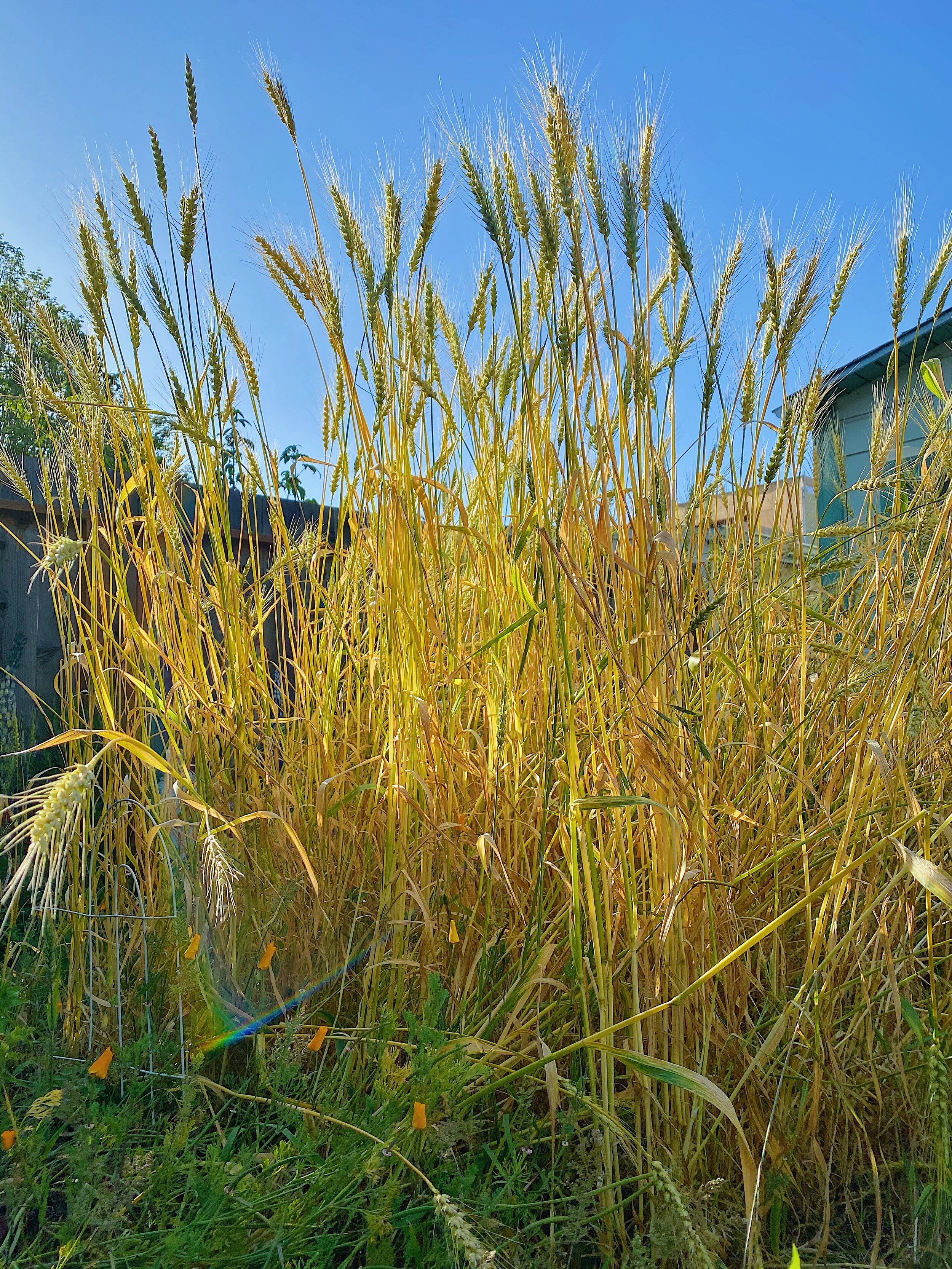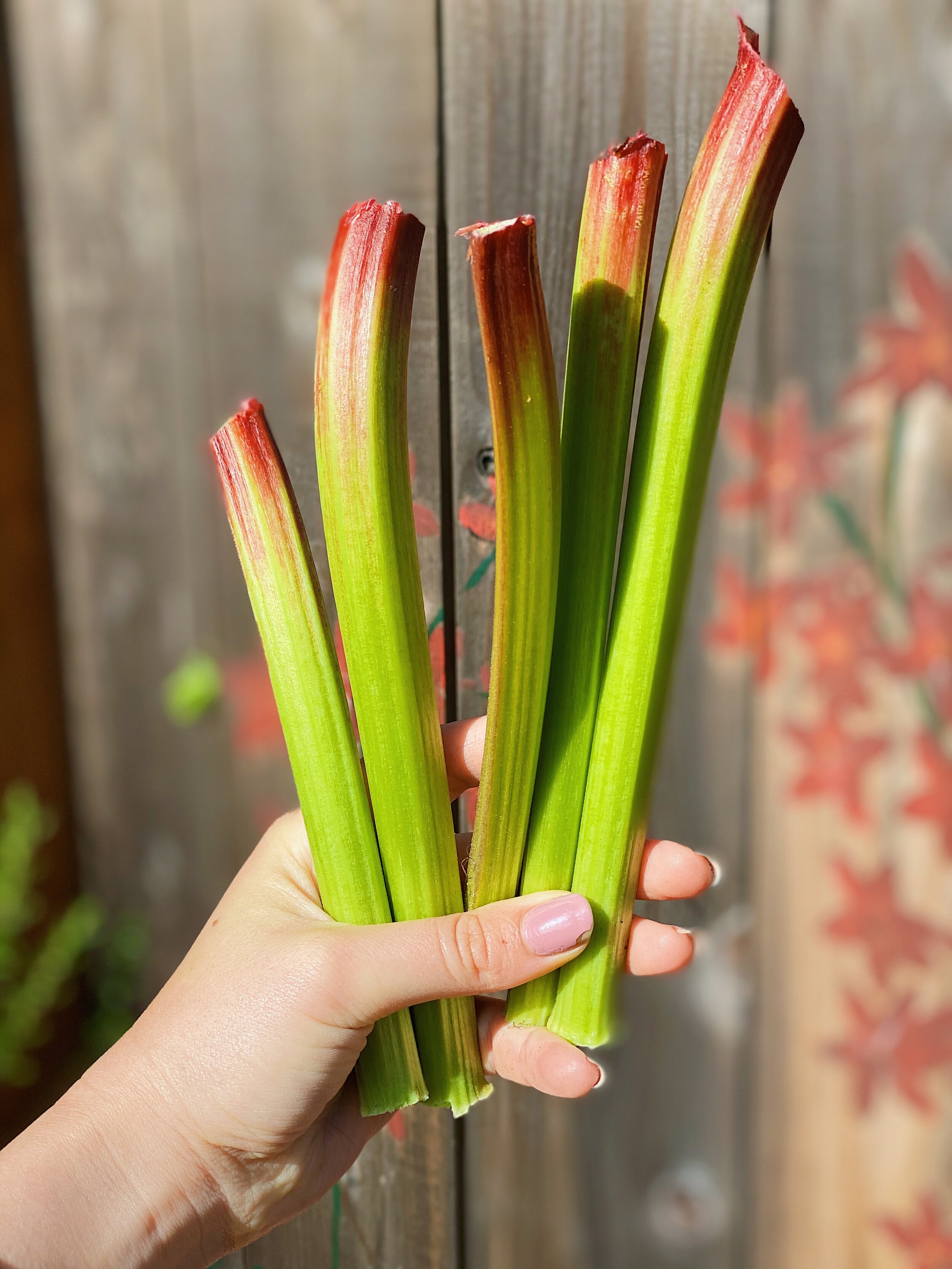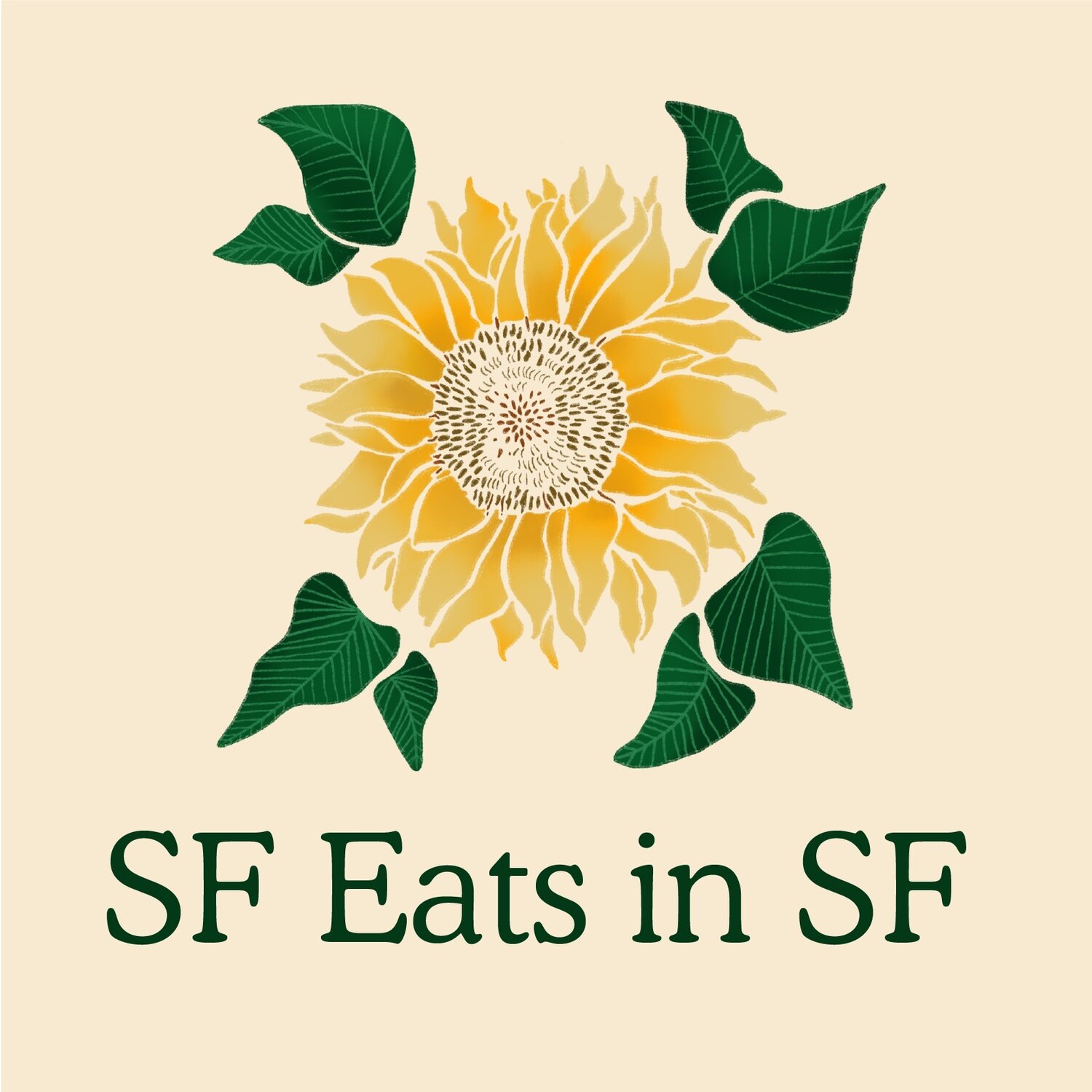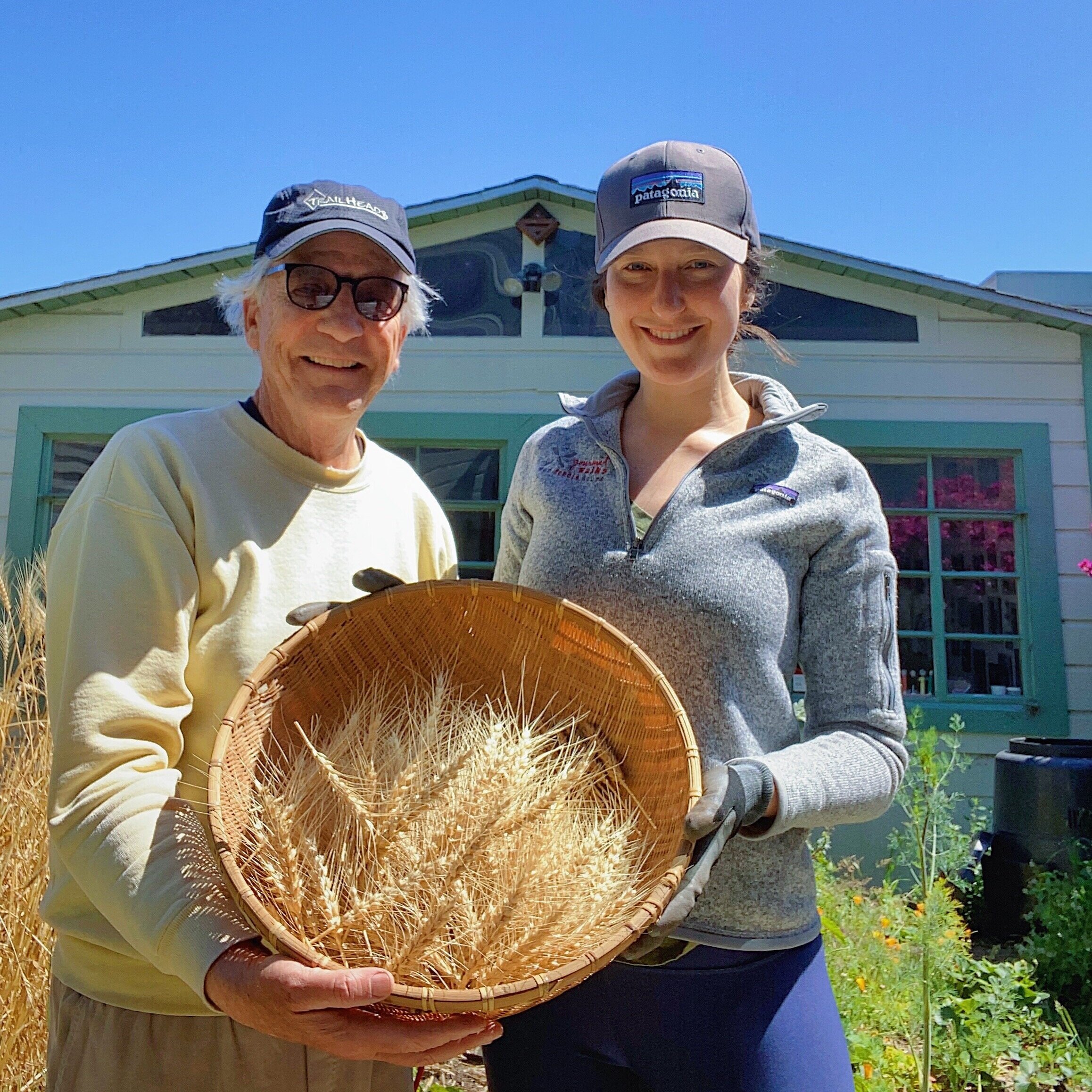The garden tells our story of birth, death, and rebirth.
My father and I garden together in the heart of San Francisco. We grow seasonal plants like wheat, perennial plants like artichokes, and ornamental plants like sunflowers. We garden to learn more about how food is grown, and also to connect with our lost loved ones.
“This garden is NOT saving me money. Food is just too cheap in the USA. That’s why there hasn’t been more social unrest. This garden is a laboratory, school, and source of wonderment and delight. It’s a laboratory because we’re trying to remember what our grandparents knew and we have forgotten. By the end of WWII Victory Gardens were producing 40% of the American food supply. We have collectively forgotten so much about gardening and food production since 1945. So this garden laboratory is for learning about food and its production. This garden is a school because we don’t know anything about food. We shop for food in boxes, we buy food in take-out, and we consume food in restaurants. But what are we eating? How is it seasoned? How is it flavored? Why is it pounded with herbicides and pesticides? This ignorance about food is why Michael Pollan’s books are wildly popular. Our institutional memory of food and its production has been obliterated by agribusiness. This garden is a source of wonderment and delight because of my symbiotic relationship with these plants. I never sat in my English-style garden even though it was beautiful. I just never connected with it. Yet I can sit in a mindful space in this growing garden with ease. I know it sounds crazy but like the great Californian Luther Burbank I’m talking with these plants.”
— My father, Howard Fallon
When my parents moved into our San Francisco Victorian in the 1980’s, we had an English-style garden. This 23x25’ patch of land had green grass, a cobblestone pathway leading to a studio unit, a Granny Smith apple tree espaliered to the fence, and a fuchsia bougainvillea espaliered to the opposite fence.
The time we spent in our English garden was limited thanks to San Francisco’s signature cool climate. We relished those warm Fall days with backyard BBQs and birthday parties, which could fit a gaggle of hyper toddlers.
Baking with my mother, Julee.
Long before my father converted the English garden into an edible one, we grew curious to learn more about how food is produced. Kendra also became particularly interested in the production of meat. Impassioned by her own research and speech on animal cruelty that she delivered to her high school class, Kendra stopped eating meat at age 14.
Kendra took responsibility for her actions and recognized that the humane and environmentally responsible thing to do was stop eating meat. It would take me over thirteen to follow my sister’s footsteps.
My father maintained the English garden throughout the years, and while it was not neglected, it was sorely underutilized. That changed when a quake hit my family: my mother lost her battle against cancer. I was 20 years old, Kendra was only 17, and we suffered trying to imagine a life without her.
As a part of my father’s bereavement, he looked to find tenderness and signs of life in our garden. He decided to realize his dream of converting the English-style garden into an edible one. Inspired by an article he read out of Sunset Magazine about the MyFarm initiative, he contacted the owner, Trever. With a vision of helping people grow their own delicious foods, MyFarm hoped to help people connect with their food, and make food production secure and sustainable.
The spring after my mom’s passing, my father contracted with MyFarm to install a garden (including a drip-irrigation system), plant heirloom vegetable seeds, and have them come back once a week to help us maintain and harvest the food we grew. This big undertaking involved daily tending to the soil, and was arguably the most effective form of therapy that my dad had at the time. MyFarm’s business model collapsed shortly after partnering together, but my dad found another expert gardener who helped him forge his new passion and therapy.
The following year, Kendra followed me to UC San Diego. It was a gift to spend my senior year of college and her freshman year together. We both lived on campus and regularly spent time together. We grew closer than ever before, but Kendra yearned for a connection to our mother. Growing up hearing stories of our mother trekking through Nepal’s Annapurna mountain range, Kendra felt called to go to Nepal.
In her commitment to social justice and earnestly wanting to connect with my mother, Kendra found an orphanage to volunteer with outside of Kathmandu. The orphanage also only cooked vegetarian food, and many of the vegetables came out of their own garden. Though thousands of miles away, she felt at home.
My mother trekking in Nepal in the 1978
Kendra volunteering at the orphanage in Nepal.
I only had one opportunity to speak to Kendra on the phone all summer. With no cell service and spotty wifi at best in the rural village she lived in, most of our correspondence was via Facebook when she had a chance to visit an internet cafe in Kathmandu. During this last conversation with her, so much unfolded before me. I missed hearing her voice, and I told her how I was so proud of her and how much I loved her.
Kendra found peace in Nepal, and told me she wasn’t ready to come home. She extended her trip and tagged on one last trek to the base camp of Mount Everest before ultimately needing to come home to start her sophomore year at UCSD>.
On August 24th, 2010, two weeks before I graduated from UCSD and just three days before Kendra’s 19th birthday, Kendra boarded a plane headed for Lukla, where she and the other passengers would begin their trek to base camp. Twenty months to the day after my mother’s passing, the plane crashed in a rural village outside of Kathmandu called Bastipor. None of the 14 people on the plane survived.
I scraped through my final weeks of University, trying to find space to cope with an incomprehensible reality. I returned home to San Francisco, and as my father and I grieved, we turned to each other and towards the garden again.
The Garden Today
The garden is our sanctuary where we connect to the soil and our lost loved ones.
The garden builds community by bringing together friends, neighbors, and those who pass by the mural in the alley, curious to know the story of the faces on the wall.
The garden inspires us to learn more about where our food comes from, and challenges us to find creative ways to eat more plants.
We hope that our garden inspires you to grow and eat more plants too.
My father commissioned muralist Amanda Lynn to paint this mural on our garage wall to commemorate the second anniversary of my mother’s yahrziet. Kendra, my father, and I all worked together on the design with Lynn as it was painted through the summer of 2010. After the plane crash, my father and I decided to add Kendra’s name to the mural.
In the second incarnation of the mural, we used real photos of Kendra and Julee trekking in Nepal as inspiration for their portraits. They are set admist their two homes: San Francisco and the Himalayas. In the center is the stupa and emblem for the SKY Memorial Foundation, built to memorialize those who perished in the plane crash. Nepali prayer flags drape the stupa, which were blessed by Buddhist monks.































